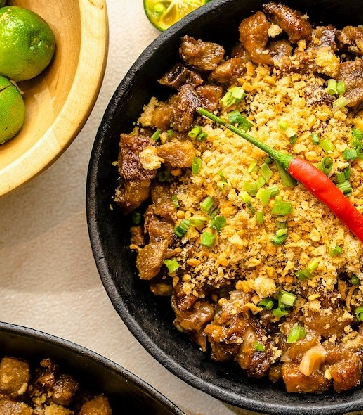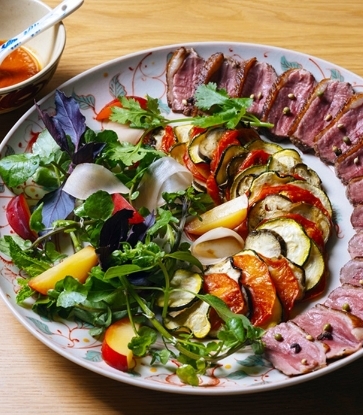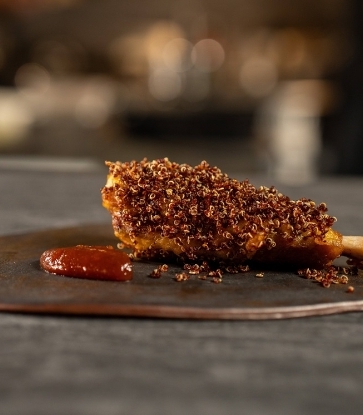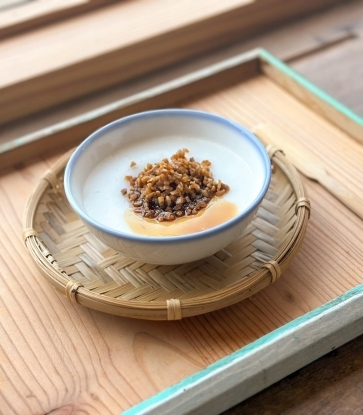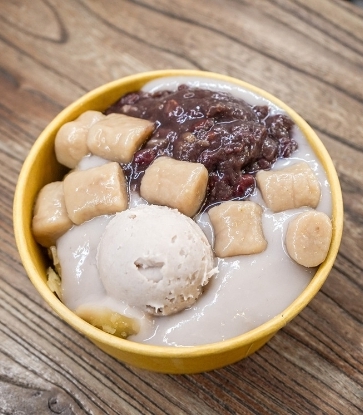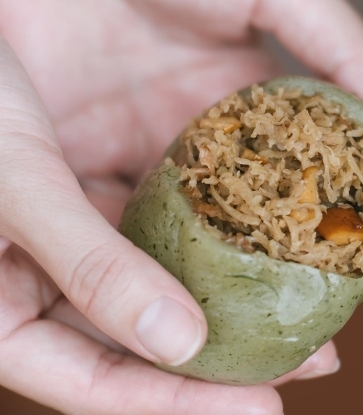Pig’s feet are a common ingredient in Taiwanese cuisine, and several of the Big Gourmand establishments in the MICHELIN Guide Taipei Taichung 2021 boast pork trotter specialties.

In Taichung, Bib Gourmand eatery Fu Din Wang (Central) specializes in pig trotters sourced fresh from local farms where the pigs are reared to a sizable 130kg and produce high quality meat with unbeatable flavor and texture.
Another Taichung establishment that retains its Bib Gourmand distinction this year is Fu Juang Yuan, which keeps its juicy whole pork trotters simmering all day long in a flavorsome marinade that locks in all the flavor and juices in the meat so that when you cut into it, “it’s like cutting into a watermelon and having all its juices flow out”.

The signature dish at Taipei Bib Gourmand establishment My Tsao is marinated pork knuckles, made by gently braising gelatinous hock and trotters until the meat is tender and the sauce rich and sticky so that diners can’t help but finish a whole bowl of noodles with it.
Common Cooking Methods
In Taiwan, pork trotters are usually cooked in two methods: braising, like at the places mentioned above, and stewing. Trotters may first be fried in oil then braised in a marinade of soy sauce, sugar, and spices to create a saucy dish that is eaten with rice, or stewed in water until the liquid and meat are milky white, then enjoyed dipped in a sauce of chilies, garlic, and soy sauce. Rich and indulgent or clean and refreshing, each style has its own fans.
In Taiwanese terms, a leg of pork has several different cuts: the feet or trotter, with its hooves, skin and tendons are known as kha-tsiam; further up, the hock is known is tiong-khoo where the bones, meat, and tendons are what is used in braised and stewed dishes; kut-lun refers to the knee joint while the ligament and cartilage within it is also known as the “tiger’s paw”, which is often braised and served at banquets. Finally the back portion of the shank end on the hind legs is known as thui-khoo, where there is more fat and thicker skin, which is most often fried then braised.

Pork tendons are also a delicacy that can be sun-dried then used in dishes like Buddha Jumps Over the Wall and in soups. Though the tendons can be reserved for other culinary purposes, many traditional shops will boast that they do not remove the tendons because removing them affects the quality and thus the price of the trotter meat. Colloquially known as “rat meat”, the meat in the hind legs are often served as a minced topping in soup or dry noodle dishes, or sliced in bento boxes, while the thigh bones are an indispensable base in stocks and soups.
Cultural symbolism and practices
In Taiwan, pork trotters are also consumed on special occasions. For example, pork trotters stewed with peanuts are a must-have during the postpartum confinement period because it is believed to be nutritious for new mothers and aid in lactation. Birthdays in the past were more often celebrated with pork trotters in noodles than with birthday cakes, the noodles served long and uncut to symbolize longevity.
Consuming pig’s feet is also symbolic of changing one’s luck: those released from prison would step over a charcoal stove and eat pig’s feet noodles to mark the removal of bad luck. In Taichung, pork trotter noodle shops are often found near temples where superstition dictates that the bowl needs to be moved and turned around its place before diners can pick up the chopsticks to tuck in, to represent a complete turn of luck.
This article was written by Chen Jingyi and translated by Rachel Tan. The original article can be viewed here.










